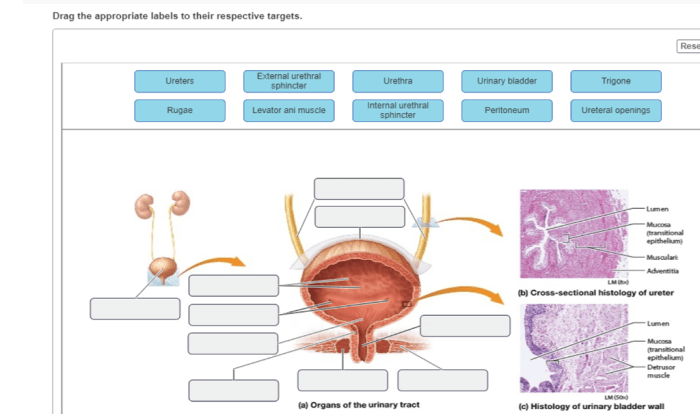Chapter 9 the endocrine system answer key pdf – Embark on a scientific voyage with Chapter 9: The Endocrine System Answer Key PDF, your definitive guide to unraveling the intricate world of hormones. This chapter provides a comprehensive overview of the endocrine system, its vital role in regulating bodily functions, and the spectrum of disorders that can arise from its malfunction.
Delve into the depths of endocrine glands, their diverse locations, and the remarkable mechanisms of hormone signaling. Discover the intricate interplay between hormones and target organs, orchestrating a symphony of physiological processes that govern metabolism, growth, and reproduction.
Chapter 9 Overview
Chapter 9 of the textbook explores the endocrine system, which plays a crucial role in regulating various bodily functions through the release of hormones. The chapter provides a comprehensive overview of the endocrine system, including its structure, organization, and the key concepts associated with hormone signaling and regulation.
Endocrine System Basics
Definition and Role of the Endocrine System
The endocrine system is a network of glands that secrete hormones directly into the bloodstream. These hormones act as chemical messengers, traveling throughout the body to target specific cells and tissues, influencing their function and activity. The endocrine system plays a vital role in maintaining homeostasis, regulating growth, metabolism, reproduction, and other essential bodily processes.
Types and Locations of Endocrine Glands, Chapter 9 the endocrine system answer key pdf
Endocrine glands are classified based on their structure and function. The major endocrine glands include the pituitary gland, thyroid gland, parathyroid glands, adrenal glands, and pancreas. These glands are located in various parts of the body, with the pituitary gland situated at the base of the brain and the other glands distributed throughout the neck, chest, and abdomen.
Hormone Signaling
Hormones are released from endocrine glands in response to specific stimuli or signals. They bind to specific receptors on target cells, triggering a cascade of intracellular events that lead to the desired physiological response. Hormone signaling can be local, affecting nearby cells, or systemic, reaching target cells throughout the body via the bloodstream.
Major Endocrine Glands
Pituitary Gland
The pituitary gland is often referred to as the “master gland” of the endocrine system. It secretes hormones that regulate the activity of other endocrine glands, influencing growth, metabolism, and reproduction. Key hormones produced by the pituitary gland include growth hormone, prolactin, and adrenocorticotropic hormone (ACTH).
Thyroid Gland
The thyroid gland secretes hormones that regulate metabolism, growth, and development. The primary hormones produced by the thyroid gland are thyroxine (T4) and triiodothyronine (T3). Thyroid hormones play a crucial role in regulating cellular metabolism, bone growth, and brain development.
Parathyroid Glands
The parathyroid glands secrete parathyroid hormone (PTH), which regulates calcium and phosphate levels in the blood. PTH promotes the release of calcium from bones and increases calcium absorption from the intestines, ensuring proper calcium balance in the body.
Adrenal Glands
The adrenal glands are responsible for producing hormones involved in stress response and blood pressure regulation. The adrenal glands secrete adrenaline (epinephrine) and cortisol, which prepare the body for “fight or flight” situations and regulate blood pressure, respectively.
Hormones and Their Functions

The endocrine system produces a wide range of hormones, each with specific target organs and functions. The following table summarizes some of the major hormones and their roles:
| Hormone | Target Organ(s) | Function |
|---|---|---|
| Insulin | Skeletal muscle, liver, adipose tissue | Promotes glucose uptake and utilization |
| Glucagon | Liver | Stimulates glucose release from the liver |
| Thyroid hormone (T3, T4) | Most cells in the body | Regulates metabolism, growth, and development |
| Estrogen | Female reproductive organs, breasts | Promotes female sexual development and reproduction |
| Testosterone | Male reproductive organs, muscles | Promotes male sexual development and muscle growth |
| Cortisol | Most cells in the body | Regulates stress response, blood pressure, and metabolism |
Feedback Loops in Hormone Regulation
Hormone regulation is often controlled by feedback loops. Negative feedback loops are the most common and involve a hormone inhibiting its own secretion or the secretion of another hormone that counteracts its effects. Positive feedback loops, less common, involve a hormone stimulating its own secretion or the secretion of another hormone that enhances its effects.
Endocrine Disorders

Endocrine disorders occur when the endocrine system malfunctions, leading to imbalances in hormone production and regulation. Common endocrine disorders include:
- Diabetes: A disorder characterized by impaired insulin production or insulin resistance, leading to elevated blood sugar levels.
- Thyroid disorders: Conditions that affect the thyroid gland, resulting in either hypothyroidism (underactive thyroid) or hyperthyroidism (overactive thyroid).
- Cushing’s syndrome: A disorder caused by excessive cortisol production, leading to weight gain, high blood pressure, and other symptoms.
Importance of Early Diagnosis and Management
Early diagnosis and management of endocrine disorders are crucial for preventing or minimizing complications. Symptoms of endocrine disorders can be subtle or non-specific, making early detection challenging. Regular check-ups and screening tests can help identify potential issues early on. Prompt treatment can restore hormone balance and prevent or manage the associated symptoms and complications.
Quick FAQs: Chapter 9 The Endocrine System Answer Key Pdf
What is the primary function of the endocrine system?
The endocrine system is responsible for regulating various bodily functions through the production and secretion of hormones.
How do hormones exert their effects on target cells?
Hormones bind to specific receptors on target cells, triggering a cascade of intracellular events that ultimately lead to the desired physiological response.
What is the role of feedback loops in hormone regulation?
Feedback loops ensure hormonal balance by regulating hormone secretion based on the levels of circulating hormones or the response of target cells.
